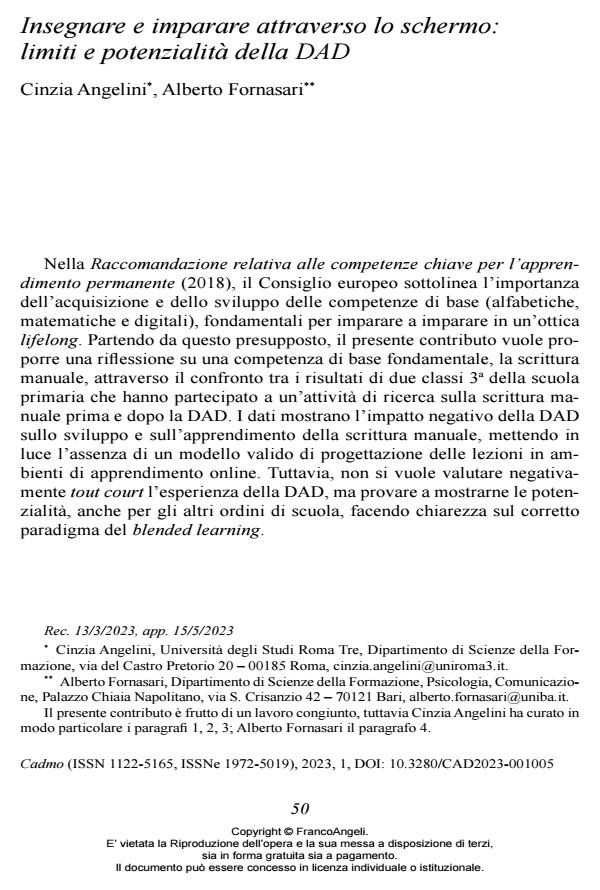Teaching and learning through the screen: the limitations and potential of Distance Learning (DAD)
Journal title CADMO
Author/s Cinzia Angelini, Alberto Fornasari
Publishing Year 2023 Issue 2023/1
Language Italian Pages 12 P. 50-61 File size 197 KB
DOI 10.3280/CAD2023-001005
DOI is like a bar code for intellectual property: to have more infomation
click here
Below, you can see the article first page
If you want to buy this article in PDF format, you can do it, following the instructions to buy download credits

FrancoAngeli is member of Publishers International Linking Association, Inc (PILA), a not-for-profit association which run the CrossRef service enabling links to and from online scholarly content.
In the Council Recommendation on key competences for lifelong learn- ing (2018), the European Council emphasised the importance of achieving basic skills (literacy, numeracy, digital skills) as a key for the development of the learning to learn competence in a lifelong perspective. Working from this assumption, this paper aims to focus on a fundamental basic skill, handwrit- ing, which has been examined in the manuscripts produced by two groups of 3rd graders before and after the distance learning occasioned by the Cov- id-19 pandemic. The results show that distance learning has had a negative impact on the development and learning of handwriting. This is mainly due to the absence of a reliable model for designing teaching in online learning environments. However, rather than merely labelling the distance learning experience as negative, this article aims to show that there can be meaning- ful opportunities, and for different school graders, if the blended learning paradigm is correctly intended and applied.
Keywords: learning, teaching, handwriting, distance learning, school.
Cinzia Angelini, Alberto Fornasari, Insegnare e imparare attraverso lo schermo: limiti e potenzialità della DAD in "CADMO" 1/2023, pp 50-61, DOI: 10.3280/CAD2023-001005